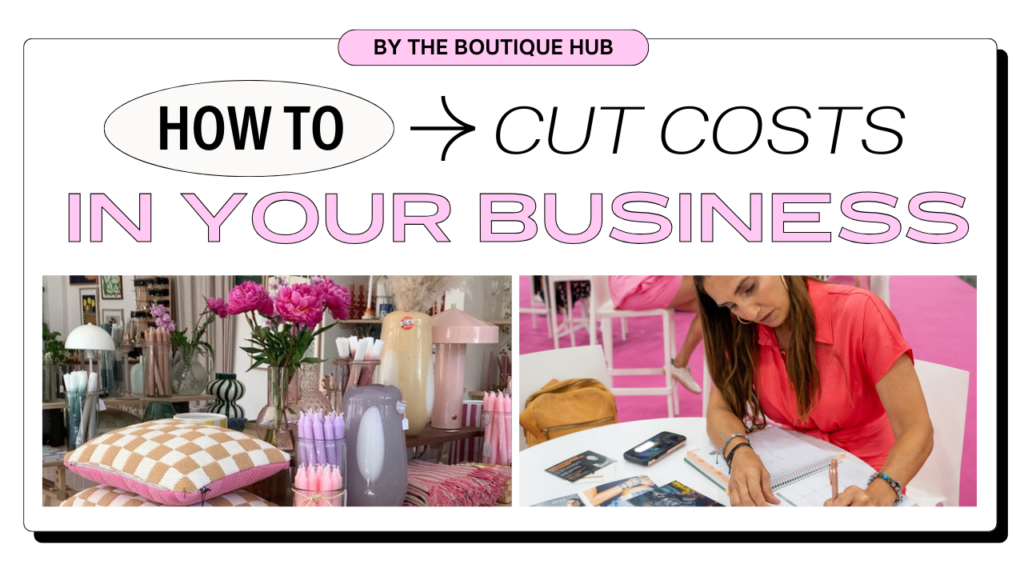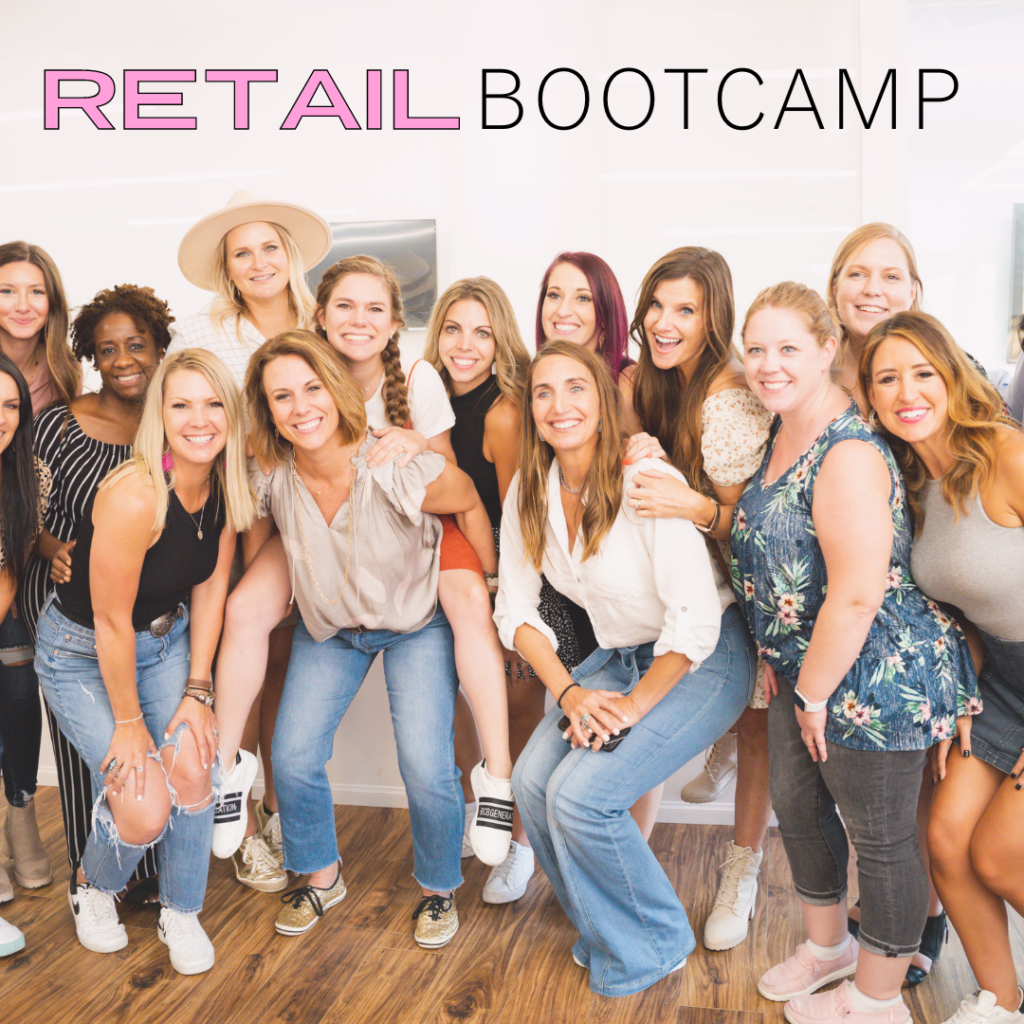7 Financial Tips Retailers Must Know… Let’s dish!
Use these 7 financial fips to manage your inventory, increase your profit margins, understand your investments, limit your markdowns and grow your business. Only a tracked number grows, so if you are ignoring your finances and buying strategy, then you’re asking for a disaster! These are 7 easy tips you can start tracking today.

The questions and complaints we hear the most often in any of our communities at The Boutique Hub are:
- I’m not paying myself.
- They say it takes 5 years to be profitable. So I’m holding out for 5 years!
- Why am I not growing?
- My money keeps going down a black hole and now my husband’s mad at me!
Do any of these things sound familiar to you? The truth is they’re bogus. None of these things should ever happen if you are managing your money, tracking your numbers, and have a clear strategy to grow your business. These tips are so crucial.
Only a tracked number grows!
Ashley Alderson
You guys have heard of this, right?
- You can’t grow your finances if you don’t know what your base numbers are, to begin with.
- You can’t manage your inventory if you don’t know what those levels are, to begin with.
- You can’t track website conversions if you don’t know how much traffic you’re getting, on an average basis.
By watching the ebb and flow of your those numbers, you can actually manage growth. If you’re just throwing things at the wall and hope they stick there is no way to have any success with those strategies.
1. Get Organized
This is so simple. Most Boutique owners get started in their business because they’re creative and they love all of the pretty things! We like to shop. But we don’t like to use the analytical part of our brains, so much. To track those numbers and get organized you can use a program like Quickbooks–rather than stuffing all of your receipts and junk in a drawer, hoping your accountant will sort it out at the end of the year. Start simple. To hold yourself accountable make a date every two weeks and go through all of your income and expenses to keep your books up to date! Talk to your accountant and see what you can write off. Keep track of your mileage & all of the things we tend to forget. Get them into Quickbooks! It’s so easy to sync with Shopify or BigCommerce. Weekly would be better but start small!
2. Track & Understand Sales by Class & Category
Many of you view sales in the categories of tops, bottoms, dresses, and accessories. Those are the bare minimum. But the truth is under tops there are different styles: graphic tees, tanks, fashion tops, kimonos, and dusters. You could even track by brand. Once we understand the minutia in the detail of the classes and categories we are selling, we can see what’s working and what’s not. So maybe you’re overstocked in graphic tees but your fashion tops are really your fastest turning product. So you have to know the difference and tracking between the two to know where to put your money when you’re starting to buy. Once you start tracking those numbers and you understand them in detail you know what is successful and what’s not!
Another thing to also consider is your aged inventory. It is the owner’s job to educate a customer on how to wear something. If a product is not moving you can restyle, reshoot, or relaunch it as a new arrival. After 1-2 weeks it’s still not moving then you can start your markdown process. Money can be made in “failing fast” by testing things out quickly to see if it works, or it doesn’t and move on.
3. Know Your Cost Margin
There are Boutique Hub members that have no idea what their margin is, so let’s start with this. If you aren’t marking your products up at least 2.5 to 3 times your cost and some products, even more, you don’t have a business. There is no way that your business model is sustainable over time. You can’t expect to pay yourself, your employees, to grow, or invest in your business if you don’t have the money to do it.
Let’s go into a little psychology for a second. As women, sometimes we think that we have to give so much value that we don’t ask for enough in return. We think we need to be the cheapest in order to make a sale. That is absolutely not the truth in retail. The truth in retail is you can sell your products when, in the customer’s mind, the value exceeds the pain of that price. Whenever value exceeds the price that’s the point in which someone buys. So if a customer looks at your buy-in group and says “There is no brand or value here it’s just a bunch of cheap stuff you can get on any bargain site”. You are training your customers to be bargain shoppers and not someone that you are building a relationship with and keeping over time. Knowing your cost and margins is crucial. How do you determine that if you’re new? Use this formula:
wholesale cost + your markup = retail cost
Then you can determine if the market will support that. Don’t get stuck on “Well I already marked it up 2.5 and that’s just enough”. You always want to go higher. If you see your product at other stores and it’s more, it’s okay to ask more.
The most successful owners will tell you it’s a hunt for the best deals and margins. When you do your shopping in LA, you are getting a discount. Shows like MAGIC have a big markup. If you’re brave enough, ask your vendors for a discount so you can get your prices down. What’s the worst they can say? No? So it’s silly for you not to ask for a discount! The most successful Boutiques get them and you can too.
Once you have added on your markup you will also include the cost of shipping. Add this for both your cost of having the items shipped to you and to your customers. If you are offering free shipping without this…shame on you;) Shipping is the #1 place that Boutiques lose money hand-over-fist. Look at the data. If shipping costs are eating you alive maybe free shipping isn’t the way to go for you. You might want to look at offering free shipping over a threshold or running a special.
4. Stop Having Blanket Sales
Blanket sales are the worst thing you can do for your business. Because there is no data in that. You are just taking a smooth hit across the board. When you offer those type of sales, you are just training your customers that you are a bargain store. Sales, promotions, and events are strategies to get people in the door and take the loss leader. A savvy business owner would buy her merchandise at the off-price show in Vegas for 30-40% off. When she ran her 30% off sale, that Boutique owner would still have a 60% profit margin. Her customers would come to her store for the loss leader and then she would market and upsell her other products. Her customers would think they are getting a deal and she still profits. That’s how you make money!
5. Growth Only Happens 3 Ways
These three basic principals are the basis for everything you need to grow your business.
- Getting new customers
- Sell more to existing customers
- Increase your margins
6. Sales & Purchases Are Not One Time Events
Many Boutique owners look at purchases as a one-time event, which is the wrong way to look at it. A product purchase is a one-time event in a series of events. The relationship you have with your customer should be viewed as a funnel. We have to surprise and delight them at each stage of the process.
Your welcome emails are so important and segmentation. So you can pick out your best customers and keep them coming back for more and more!.
7. Know The Difference Between An Investment & An Expense
You are always going to have your standard operating expenses, staff, and supplies. There are ways that we can cut down on expenses to increase our margins. For example, if there are apps we are paying for but not using. Those items have a low ROI (return on investment). Closing the gap on those unnecessary expenses is crucial. But items like Facebook Ads (when done correctly) and Shopify are an investment. Because the more you spend the more you make. Another investment is a membership to The Boutique Hub. You get what you give and the more you put into your membership the possibilities are endless.
Remember, only a tracked number grows! Our 8 financial tips that Boutique owners must know will poise your business for growth and long term success. Become a savvy business owner and make it a priority to get organized, track sales by categories and class, know your margins, quit having blanket sales, understand that purchases are not one-time events, and know the difference between an investment and expense!

8. Invest Retail Bootcamp
Like college for retail boutique owners, Retail Bootcamp is the most trusted live group coaching program for owners and teams serious about growth.
Inside of Retail Bootcamp, you’ll get lifetime access access:
- Live, weekly access to learning with Ashley & Sara
- 30+ easy-to-follow digital lessons across 6 layers of business
- 14 weeks of live, group coaching covering all lessons
- Private Facebook community for daily Q & A
- 50+ Guest Experts speaking on each lesson
- 20+ Downloadable Templates & Bonuses
- Invitation to private LA Buying Retreat
- Lifetime access to participate each semester

We hope you loved our article on Boutique Financial Tips For Success. How else can The Boutique Hub help you grow?
Get more information on growing your business by joining The Boutique Hub where we have tons of training, information, and most importantly, connection! www.theboutiquehub.com/join Try out our service for a month, cancel anytime.
Follow along on Instagram @theboutiquehub!

